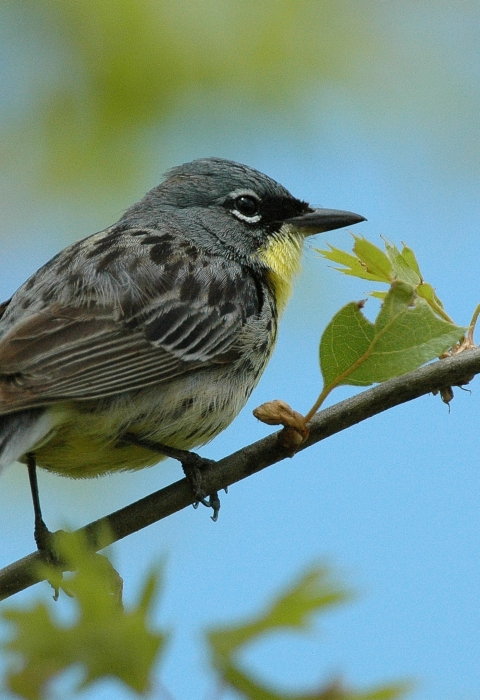The lush wetlands on the southern edge of Wisconsin’s Green Bay were once one of the largest, most biologically rich habitats in the Great Lakes and because of the Great Lakes Restoration Initiative, their distinctive values are returning. We at the U.S. Fish and Wildlife Service are proud to share in this progress with the U.S. Environmental Protection Agency.
Wildlife abounds along the lower bay’s Cat Islands once again. Shorebirds stealthily dip their way through marsh grasses in search of prey. Flocks of ducks and geese spiral down from the sky, finding rest-stops on their long migrations. Groups of white pelicans glide low over the shallows and the hoots of snowy owls can be heard at nightfall. Meanwhile, yellow perch and walleye wend their way along the weedy shoreline, foraging on plentiful insects and settling into protective coves to spawn.
Restoration takes time, but the shared commitment of scores of partners, bolstered by sustained investments from Congress, is bringing the Cat Islands back to life.
A shot in the arm
The Cat Islands are just one part of the Lower Green Bay and Fox River region designated as an Area of Concern by the United States and Canada in the 1980s.
Areas of Concern are toxic hotspots dotting the shorelines of the Great Lakes and their designation is the starting point for restoration. They are technically defined as geographic areas where significant impairment of beneficial uses has occurred because of human activities at the local level.
Fast-tracking progress toward delisting Areas of Concern is one goal of the Great Lakes Restoration Initiative, providing a significant infusion of resources for restoration since 2010.
The first phase of reconstruction for the Cat Islands, for example, began in 2012 with a $1.5 million Great Lakes Restoration Initiative grant, giving a shot in the arm for restoration plans that went as far back as the late 1980s. Back then, high-water levels, severe storms and erosion wiped out nearly all the islands’ habitats. Without the island barriers, coastal wetlands weren’t protected from high-energy wave and storm effects. Damaged further by contaminants entering the environment upriver - from industry, agriculture and urban development - the lush wetlands that once thrived with life became more like a dead zone.
Since then, a massive mobilization of partners - a common element of all Areas of Concern - has provided additional investments for the Cat Islands project, and also provided the local knowledge, ecological expertise and manpower to guide the way.
In an extraordinary spirit of public-private partnership, Areas of Concern bring together federal agencies like the U.S. Environmental Protection Agency, the U.S. Fish and Wildlife Service, agencies in eight Great Lakes states, dozens of American Indian Tribes, scores of community groups and thousands of citizens.
Perseverance pays
Out of a full menu of 14 markers of environmental degradation, or beneficial use impairments, each Area of Concern has identified certain ones that partners use to guide restoration.
For every marker identified, partners have specific restoration targets they must reach before an Area of Concern can be delisted. When they reach the restoration target for a specific marker, partners move one step closer to delisting.
We at the U.S. Fish and Wildlife Service have a leading role in restoring Areas of Concern across the board, lending our expertise on markers related to fish and wildlife populations; the presence of tumors and deformities in fish, birds and other wildlife; and loss of habitat.
For example, for many years we’ve supported partners’ cleanup and monitoring efforts in Ohio’s Cuyahoga River Area of Concern, where certain fisheries showed persistently high rates of tumors and deformities. Last year, we determined there was enough evidence that the restoration target for that marker was reached, one clear sign of river renewal.
It's all connected
On the shores of western Lake Erie, the mouth of the Maumee River was once the gateway for a vast network of swamps, marshes and forests known as the Great Black Swamp. Stretching for 1,500 square miles, these prime habitats pulsed with all kinds of fish and wildlife.
As the Great Black Swamp was gradually settled, drained, cleared and degraded by industry and agriculture, its biological bounty eventually became the Maumee Area of Concern.
Today, Cedar Point National Wildlife Refuge, on the shores of western Lake Erie is a centerpiece of restoration. With ingenuity, we use tools and techniques that mimic historic habitat conditions, trying to make smaller pieces of the landscape capable of supporting fish and wildlife in abundance once again.
One example is a new, specially engineered water control structure that allows local drainage water to flow in and out of restored wetlands. It also filters runoff and assists in cleaning Lake Erie. Our work with partners also has improved more than 150 acres of coastal wetlands and restored a connection to Lake Erie.
Just like Green Bay’s Cat Islands, Ohio’s Cuyahoga and so many other parcels within Areas of Concern, the rebirth of healthy habitats and the comeback of critters tell the restoration story best.




